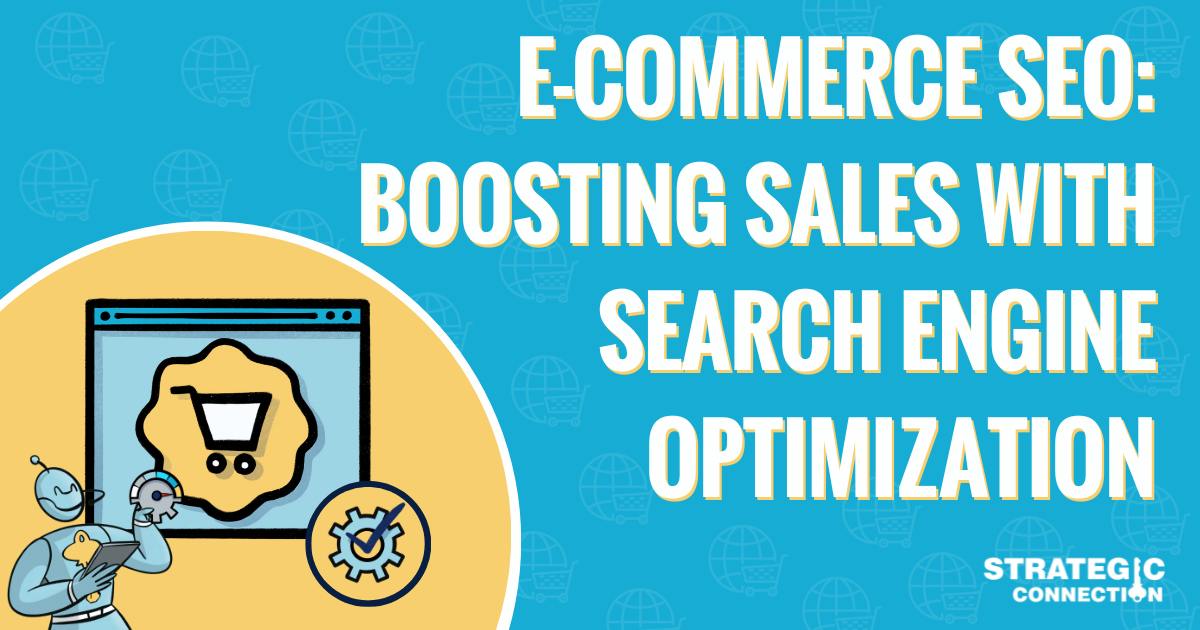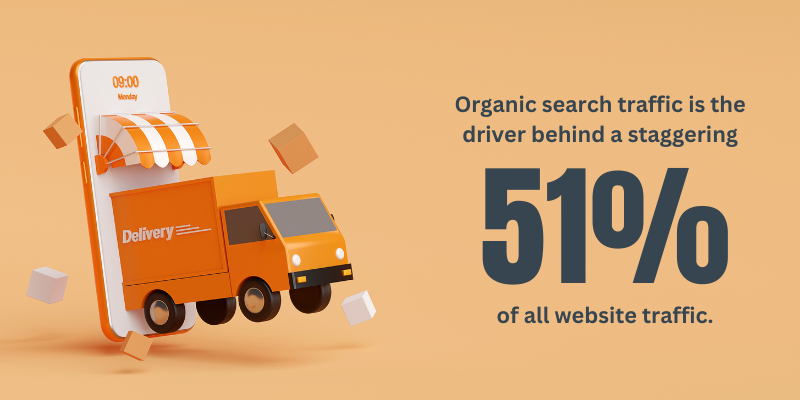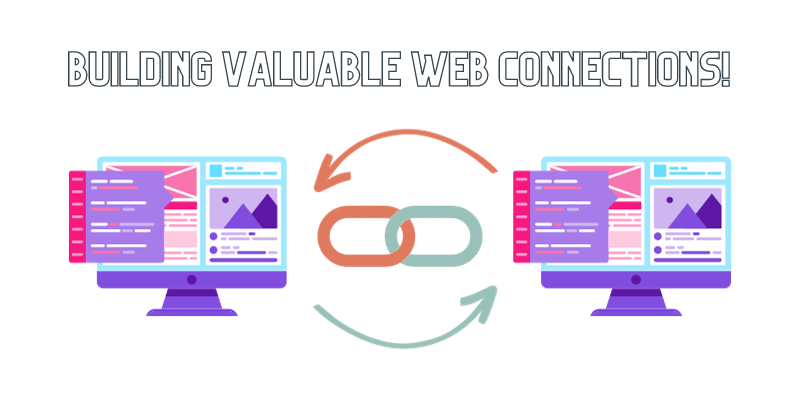
E-commerce SEO: Boosting Sales with Search Engine Optimization
Posted by: Ali Jaffar Zia
November 14, 2023
Introduction
In the fiercely competitive world of e-commerce, where thousands of online stores vie for consumer attention, the need for effective differentiation is paramount. One highly potent tool that can set your e-commerce business apart is Search Engine Optimization (SEO). In this comprehensive guide, we will delve deep into the realm of e-commerce SEO, exploring how it can significantly enhance your online visibility, attract a substantial influx of organic traffic, and ultimately propel your sales to new heights.
Understanding E-commerce SEO
hat is E-commerce SEO?
E-commerce SEO, often referred to as e-commerce search engine optimization, entails a suite of meticulously planned strategies and techniques geared towards the enhancement of a website's visibility on Search Engine Results Pages (SERPs). It is vital to note that e-commerce SEO stands apart from traditional SEO in its specific focus on optimizing product listings and category pages, with the ultimate goal of driving sales.
Why E-commerce SEO Matters
To put things into perspective, consider this data: A comprehensive study conducted by BrightEdge revealed that organic search traffic is the driver behind a staggering 51% of all website traffic. This statistic underscores the profound influence search engines have on directing potential customers to your e-commerce store. Failure to harness the power of SEO effectively may result in missing out on a substantial pool of potential buyers.

Keyword Research for E-commerce SEO
The Significance of Keyword Research
Keyword research forms the bedrock of any successful e-commerce SEO strategy. For e-commerce businesses, the importance of identifying the precise keywords that prospective customers are using cannot be overstated. To embark on this journey effectively, employ tools like Google Keyword Planner, SEMrush, and Ahrefs. These tools not only help you discover relevant keywords but also provide invaluable insights into their search volume and competitiveness.
Long-Tail Keywords and User Intent
While broad keywords are significant, long-tail keywords often yield higher conversion rates. These phrases are characterized by their specificity and their close alignment with user intent. For instance, someone searching for "men's running shoes size 10" is more likely to make a purchase than someone searching for a generic "running shoes."
On-Page SEO for E-commerce
Optimizing Product Pages
The crux of e-commerce SEO lies in the meticulous optimization of individual product pages. A well-optimized product page should include:
- Unique and Descriptive Titles and Meta Descriptions: Craft titles and meta descriptions that not only include relevant keywords but also provide a clear and compelling description of the product.
- High-Quality Images and Multimedia: Visual content plays a pivotal role in e-commerce. Ensure that product images are high-resolution and provide multiple angles and views.
- Detailed Product Descriptions with Relevant Keywords: Product descriptions should be informative, engaging, and enriched with keywords. They should answer common customer questions and concerns.
- User-Generated Reviews and Ratings: Encourage satisfied customers to leave reviews and ratings. These not only build trust but also serve as fresh, user-generated content that can positively impact SEO.
Category Pages and Navigation
Your category pages should be designed with user-friendliness and SEO in mind. Employ the following strategies:
- Clear Headings: Utilize descriptive headings to categorize products logically. These headings not only make navigation easier for users but also provide clarity to search engines.
- Breadcrumbs: Implement breadcrumb navigation to help users trace their steps and understand the site's structure. Breadcrumbs also contribute to better search engine visibility.
- Logical Hierarchy: Create a logical hierarchy of categories and subcategories to facilitate user navigation and make it easier for search engines to crawl your site.
URL Structure and Internal Linking
The structure of your URLs can significantly impact e-Commerce SEO. To create an SEO-friendly URL structure:
- Clean and Descriptive URLs: Craft URLs that are concise, descriptive, and contain relevant keywords. Avoid lengthy, cryptic URLs that provide little information.
- Internal Linking: Implement a robust internal linking strategy that connects related products and pages. Internal links help search engines understand the relationships between different parts of your site and can improve overall SEO.

Off-Page SEO Strategies
Building High-Quality Backlinks
The acquisition of high-quality backlinks is a cornerstone of successful e-commerce SEO. Backlinks, or links from other authoritative websites to your own, serve as a strong signal to search engines that your e-commerce site is trustworthy and valuable to users.
To build high-quality backlinks:
- Outreach Campaigns: Reach out to relevant websites in your niche for guest posting opportunities, collaborations, and partnerships.
- Guest Posting: Contribute guest posts to authoritative websites in your industry, including a link back to your e-commerce site.
- Partnerships: Explore opportunities for partnerships with influencers, bloggers, and complementary businesses that can link to your site.
Leveraging Social Media for E-Commerce SEO
Social signals, which encompass likes, shares, comments, and overall engagement on social media platforms, indirectly impact SEO. Active and well-managed social media profiles can:
- Drive traffic to your e-commerce site.
- Enhance your online presence and brand awareness.
- Increase the likelihood of your content being shared and linked to by others.
Online Reputation Management
Effective online reputation management is vital for e-commerce businesses. It not only influences customer trust but also affects SEO. Here's how to manage your online reputation effectively:
Technical SEO for E-commerce
Site Speed Optimization
Page load time is critical for both user experience and SEO. Google's research found that as page load time increases from one second to five seconds, the probability of bounce increases by a staggering 90%. To optimize site speed:
- Image Optimization: Compress and optimize images to reduce file sizes without compromising quality.
- Content Delivery Network (CDN): Implement a CDN to distribute website assets across multiple servers, reducing latency for users in different geographic locations.
- Browser Caching: Leverage browser caching to store static resources locally, reducing load times for returning visitors.
Mobile-Friendliness
Mobile e-commerce sales are projected to reach $3.56 trillion by 2023, emphasizing the paramount importance of mobile-friendliness. To ensure your website caters effectively to mobile users:
- Responsive Design: Adopt a responsive web design that automatically adjusts to different screen sizes and devices, providing an optimal user experience.
- Mobile-Friendly Navigation: Simplify navigation for mobile users by using a mobile menu, clear CTAs, and touch-friendly elements.
Schema Markup and Rich Snippets
Implementing schema markup on your e-commerce site can help search engines understand the content and context of your products. Rich snippets, which display additional information in SERPs, can lead to higher click-through rates (CTR) and increased visibility. Common schema markup types for e-commerce include Product, Review, and FAQ schemas.
How to Use Schema Markup and Rich Snippets to Help Your SEO (oncrawl.com)
E-commerce SEO Case Studies
Case Study 1: "EcoTech Gadgets"
"EcoTech Gadgets" is a prime example of a successful e-commerce SEO strategy in action. The company took the following steps:
- Robust E-commerce SEO Strategy: EcoTech Gadgets implemented a comprehensive e-commerce SEO strategy, addressing both on-page and off-page optimization.
- Remarkable Results: Within six months of implementing their SEO strategy, EcoTech Gadgets witnessed a remarkable 50% increase in organic traffic.
- Tangible Impact on Sales: The SEO efforts directly contributed to a significant 30% boost in online sales.
Case Study 2: "Fashion Haven"
"Fashion Haven," a prominent e-commerce fashion retailer, achieved substantial growth through its SEO efforts. Key elements of their strategy included:
- Product Listings and Descriptions Optimization: Fashion Haven focused on optimizing product listings and descriptions, providing detailed information and utilizing relevant keywords.
- Exceptional Conversion Rates: Their efforts resulted in a 25% increase in conversion rates, demonstrating the power of effective e-commerce SEO.
- Impressive Revenue Growth: Over the course of one year, Fashion Haven experienced a substantial 40% increase in e-commerce revenue, attributing much of this growth to their SEO endeavors.
SEO Trends for E-commerce in 2024
AI-Driven SEO
Artificial Intelligence (AI) and Machine Learning (ML) are revolutionizing SEO. In 2024, e-commerce businesses will increasingly turn to AI-driven solutions to:
- Automate tasks such as content optimization and link building.
- Analyze vast amounts of data to uncover insights and trends
- Personalize user experiences based on behavioral data.
By leveraging AI, e-commerce companies can stay ahead of the competition and provide customers with tailored, relevant experiences.
Voice Search Optimization
The rapid proliferation of voice-activated devices has given rise to voice search. Optimizing for voice search queries will be crucial for e-commerce success. To optimize for voice search:
- Identify natural language questions that users may ask.
- Craft content that provides concise, direct answers to these questions.
- Optimize for local voice search by ensuring accurate business information in directories and online listings.
User Experience (UX) and Core Web Vitals
Google's ongoing emphasis on user experience means that factors like page load times and mobile-friendliness will continue to play a significant role in rankings. Monitoring Core Web Vitals, a set of metrics that assess website performance, is crucial. Key Core Web Vitals include:
- Largest Contentful Paint (LCP): Measures loading performance. Aim for LCP under 2.5 seconds.
- First Input Delay (FID): Measures interactivity. Aim for FID under 100 milliseconds.
- Cumulative Layout Shift (CLS): Measures visual stability. Aim for CLS score of less than 0.1
By optimizing for Core Web Vitals, e-commerce businesses can enhance user satisfaction and improve search engine rankings.
Conclusion
E-commerce SEO is not merely a marketing strategy; it is a potent tool for driving sales and fostering the growth of your online business. By understanding the intricacies of e-commerce SEO, conducting thorough keyword research, optimizing on-page and technical aspects, and staying informed about industry trends, you can position your e-commerce store for unparalleled success in 2024 and beyond. In today's digital landscape, visibility is often the first stepping stone to profitability, and e-commerce SEO is your path to achieving that visibility.
Contact Strategic Connection for an E-commerce SEO Quote. Our SEO experts can take you seamlessly through the e-commerce SEO journey.
PHONE -800-383-0515
EMAIL -info@strategicconnection.net
Learn more about Strategic Connection's SEO Services. 

